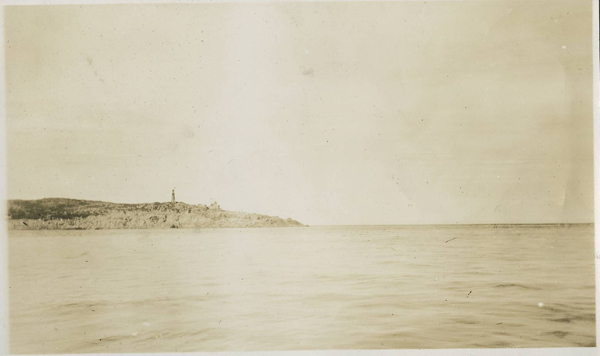Belle Isle
The Strait of Belle Isle is a 125-kilometer-long stretch of water dividing the Island of Newfoundland from Labrador. The passage is narrow with strong currents and often thick fog. It can be dangerous for ships, but the only other way to travel between the North Atlantic and the Gulf of Saint Lawrence is to sail around the entire Island of Newfoundland. There needed to be a way to help ships pass through more safely.
The solution was to build wireless stations. In the middle of the eastern entrance of the Strait is a small island called Belle Isle. In 1901, the government of Canada built a wireless station there, before Marconi arrived in Newfoundland. Ships had been using wireless technology over short distances for years. Impressed with Marconi’s work in St. John’s, the Canadian government hired the Canadian Marconi Company (CMC) to upgrade the Belle Isle station, giving it a longer and more reliable signal.
When Marconi was planning the first transatlantic signal, he had options. He could choose the best place to send and receive the signal and when to run the test. Building permanent stations was not as easy. Factors as common as weather or the type of soil could affect how well transmissions worked. Sending a clear signal across the Strait was not always possible. But having it relayed by a station on Belle Isle could solve some issues.
Tensions Arise
The Belle Isle station’s main job was to relay messages to ships passing through the Strait. The station also relayed messages across the Strait. This was very helpful for other stations, but it turned into a source of tension between the governments of Newfoundland and Canada.
Most of the stations in Newfoundland and Labrador were owned by the government of Newfoundland. The Belle Isle station was owned by the government of Canada, however. So Canadian messages were sent first and Newfoundland messages were sent last, if at all.
The problem only got worse during the First World War, when the Belle Isle station was used by the Canadian military. Almost all messages sent from Newfoundland or Labrador were abandoned. This problem would not be solved until much later, when station transmissions were strong enough to send messages directly across the Strait without having to be relayed by Belle Isle.
The Belle Isle station remained in operation until 1965. It was dismantled five years later.


